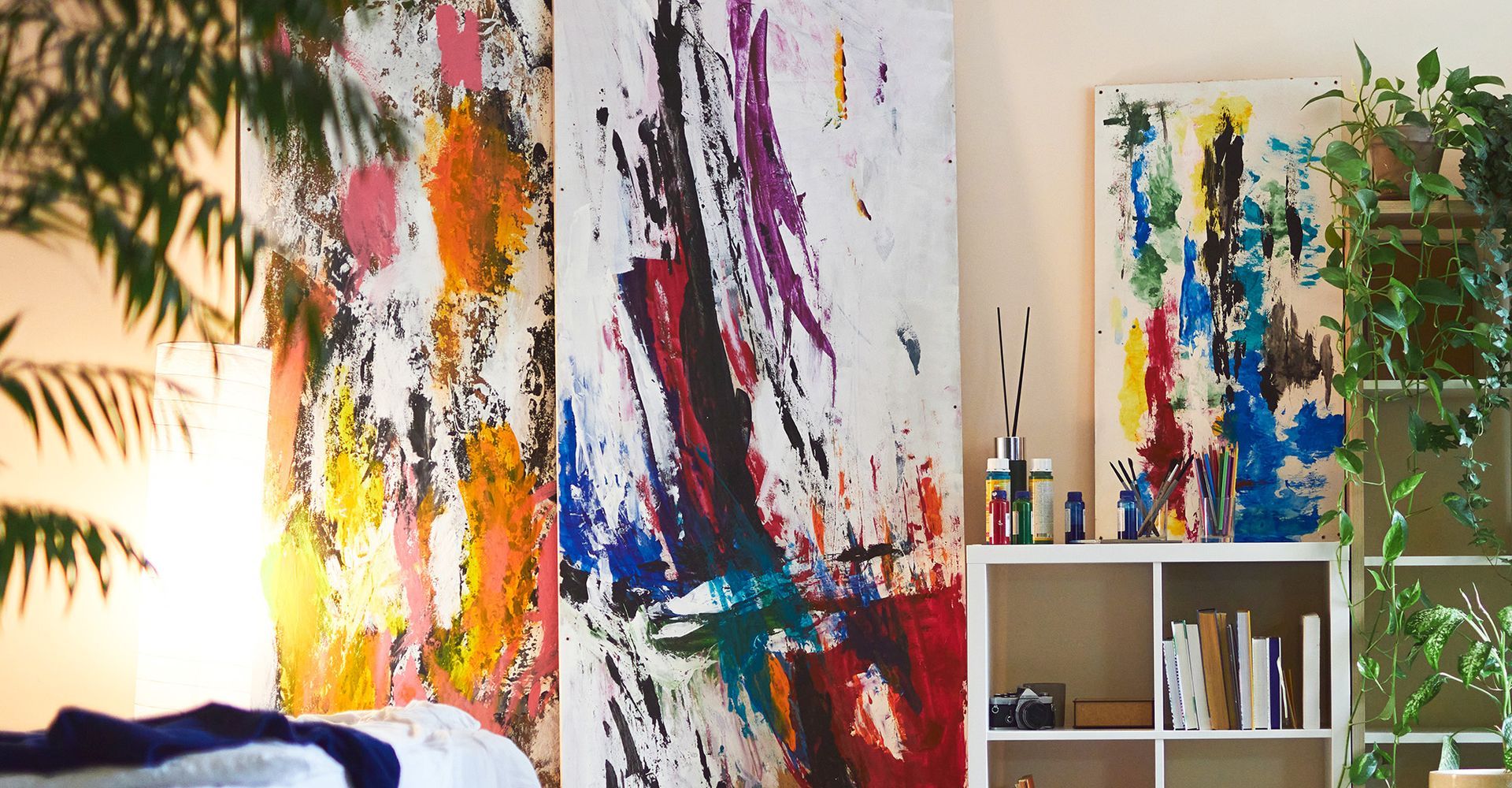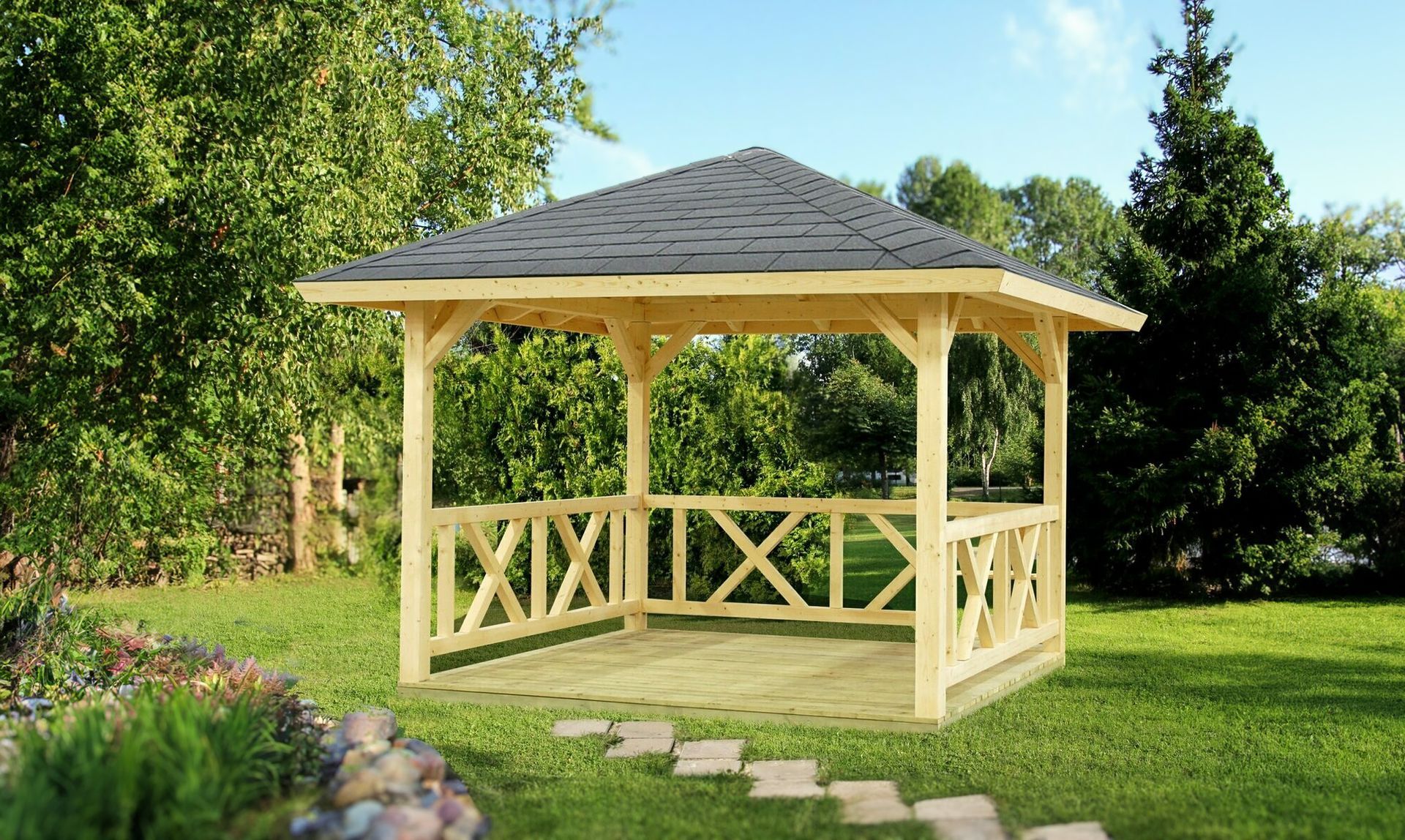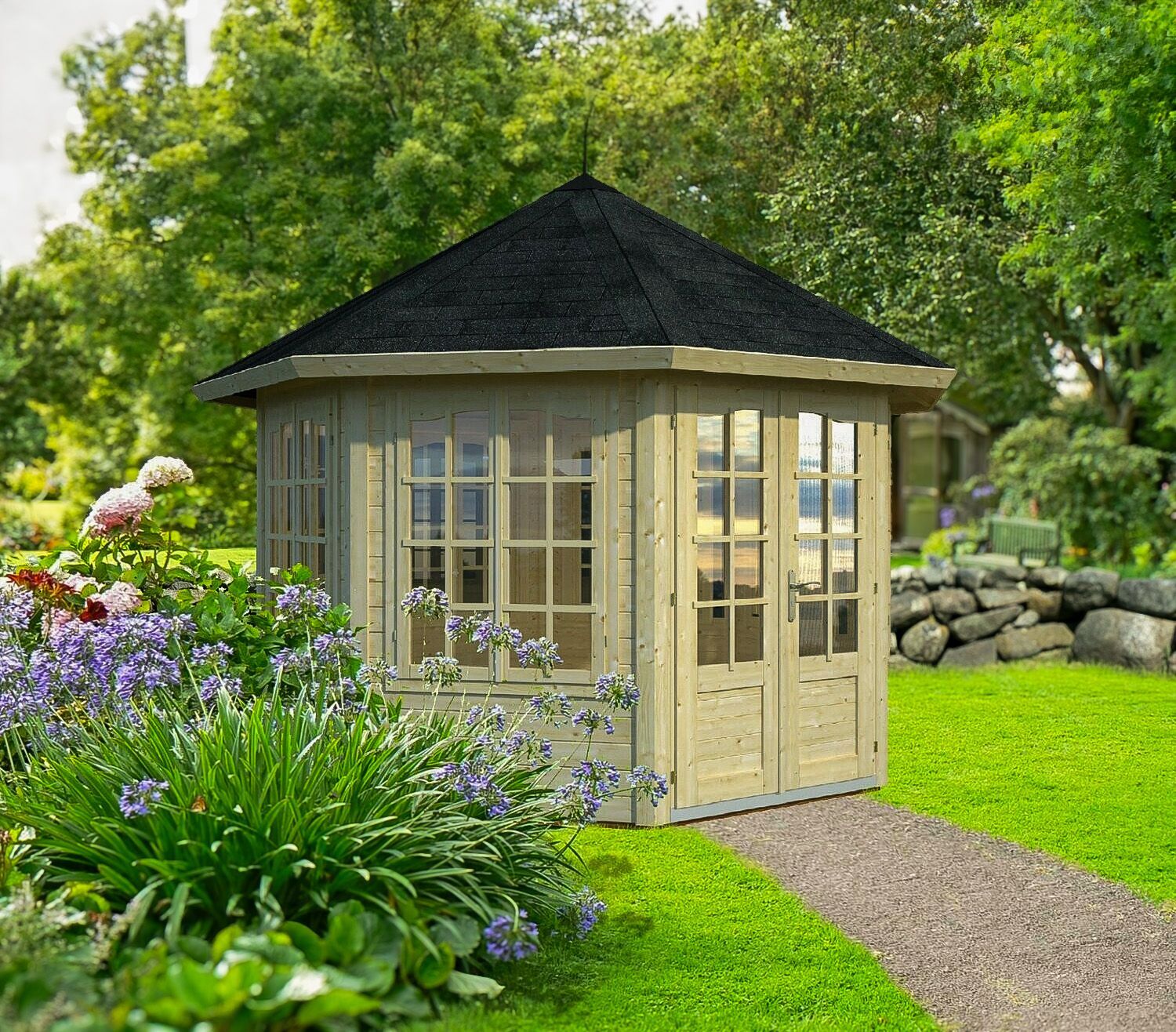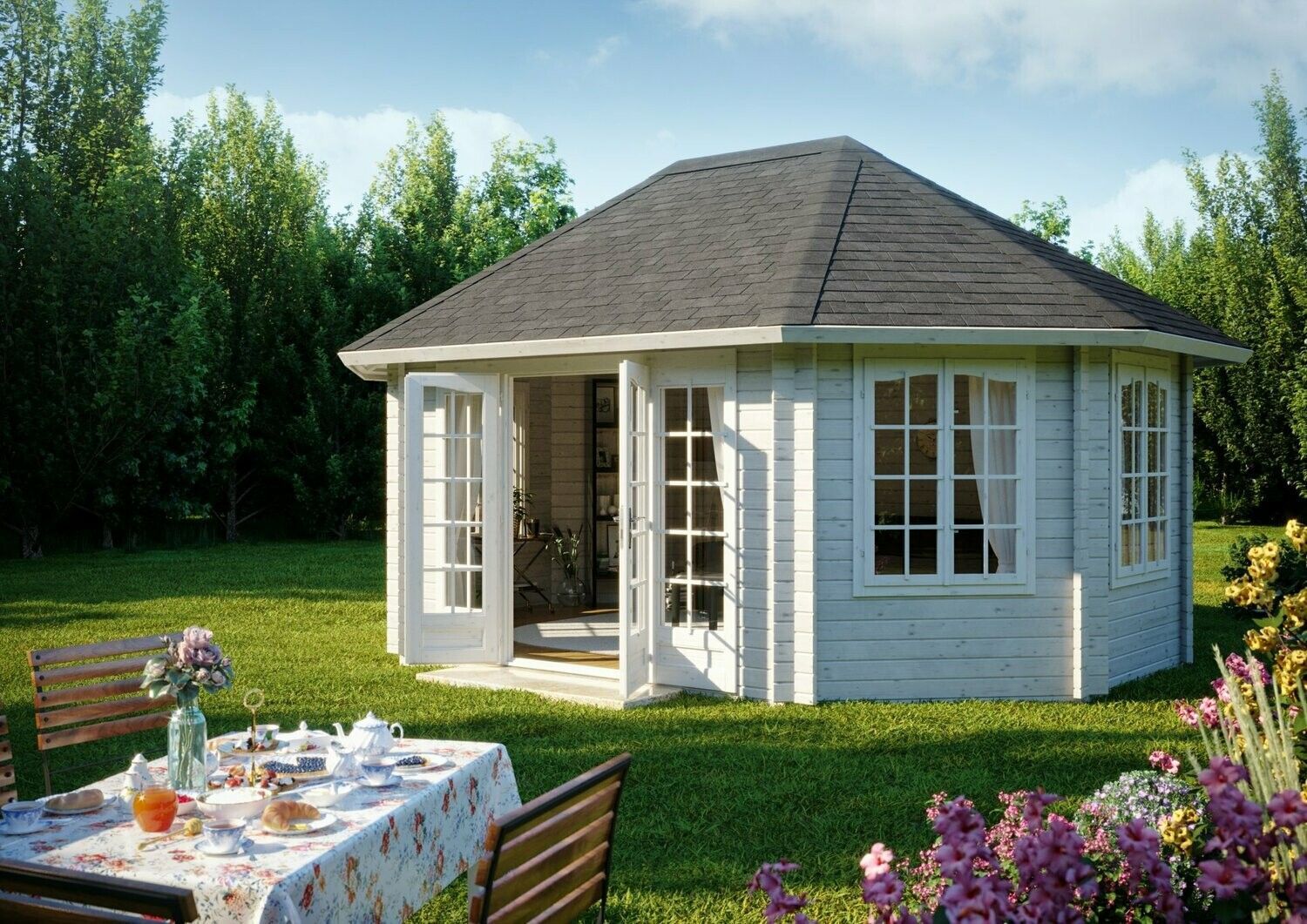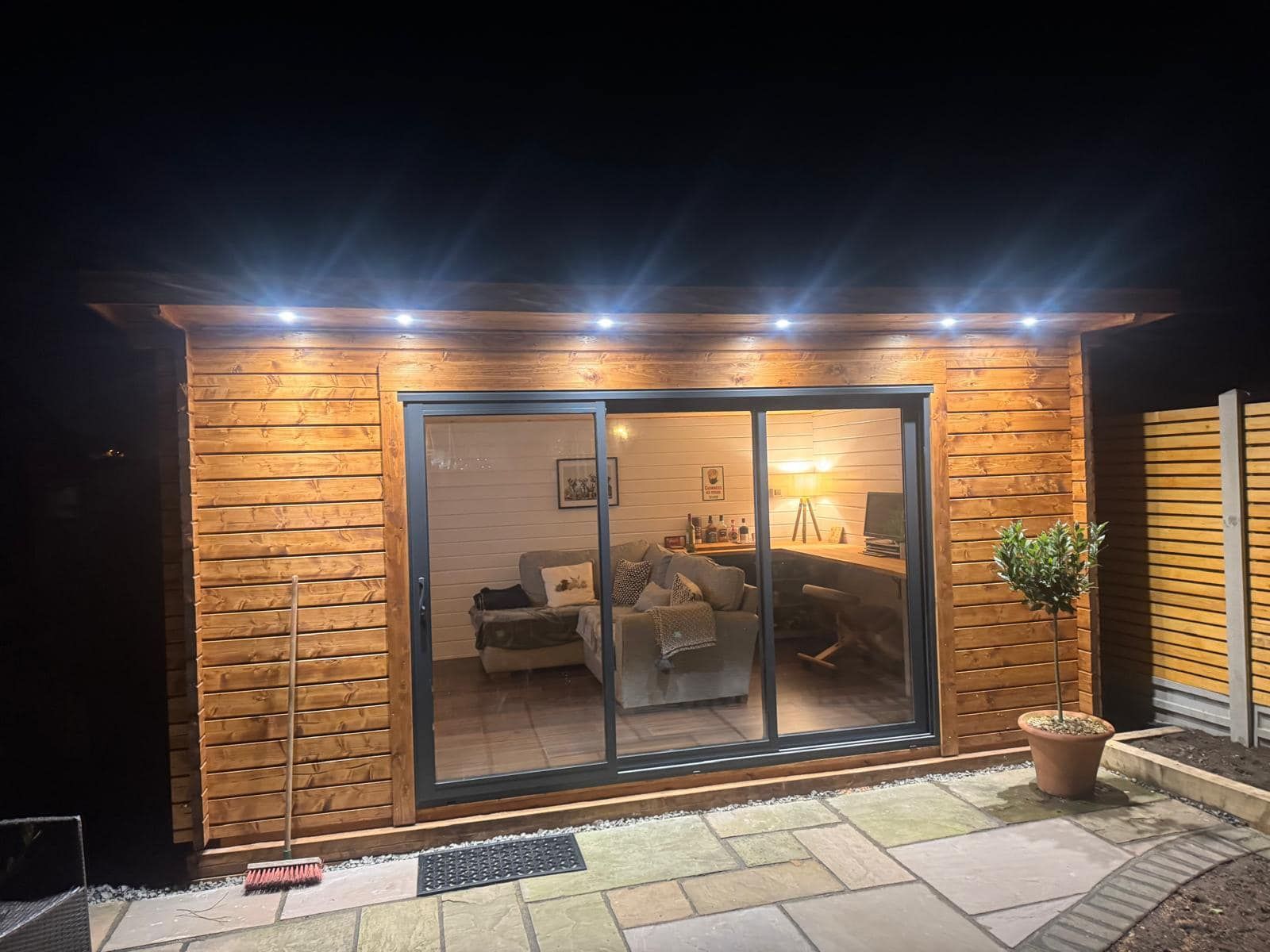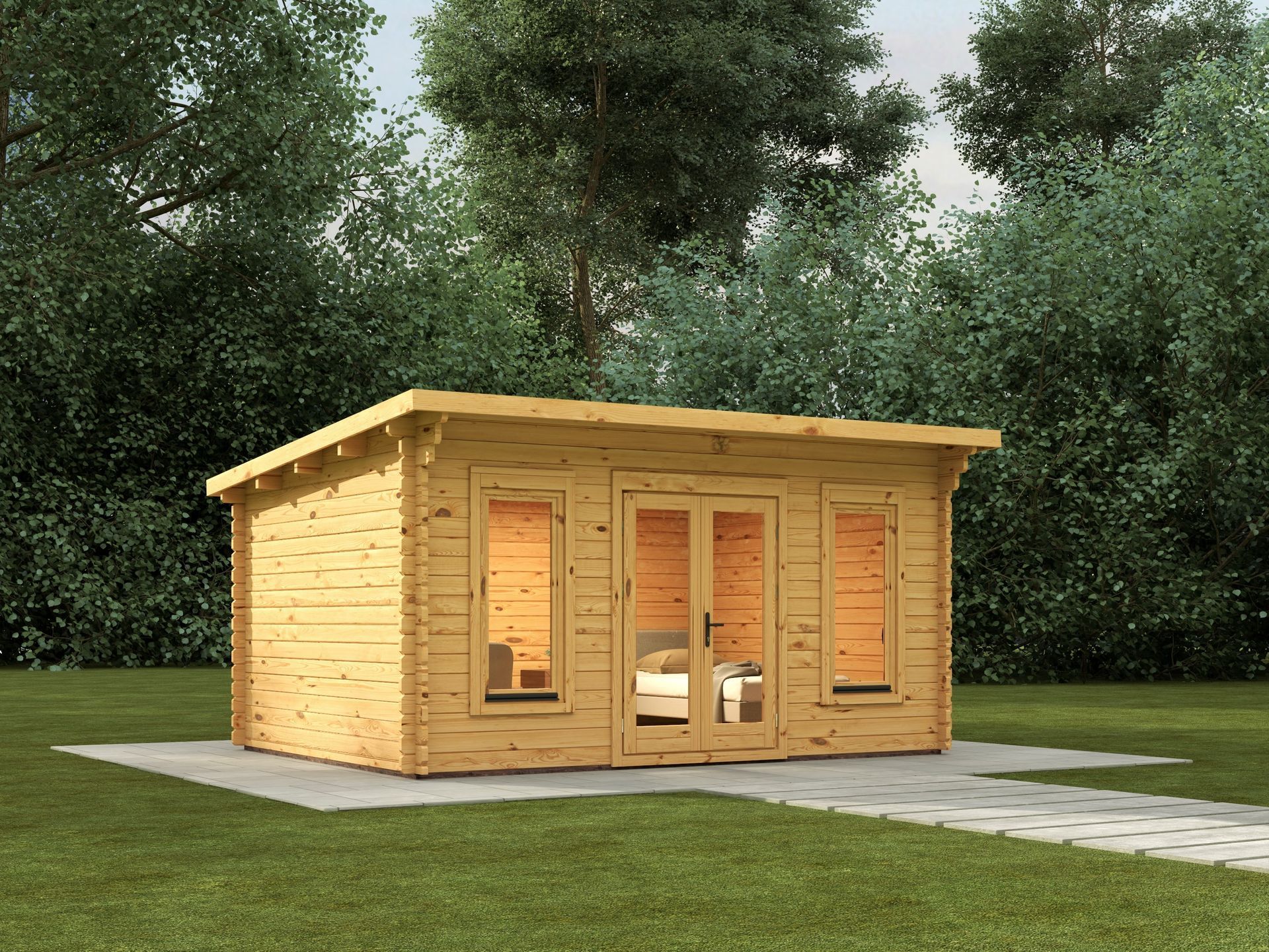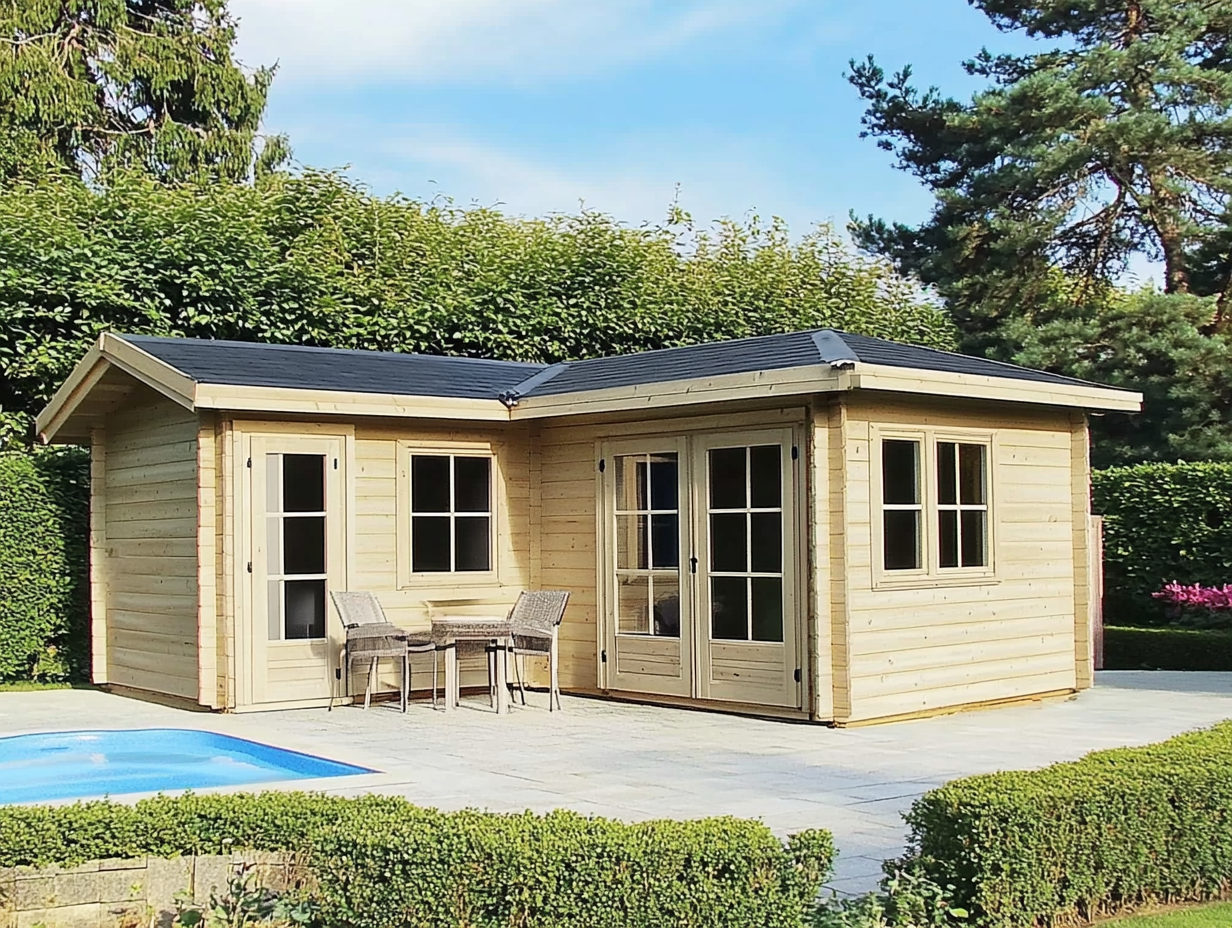Create Your Perfect Retreat: Designing Idyllic Summerhouses
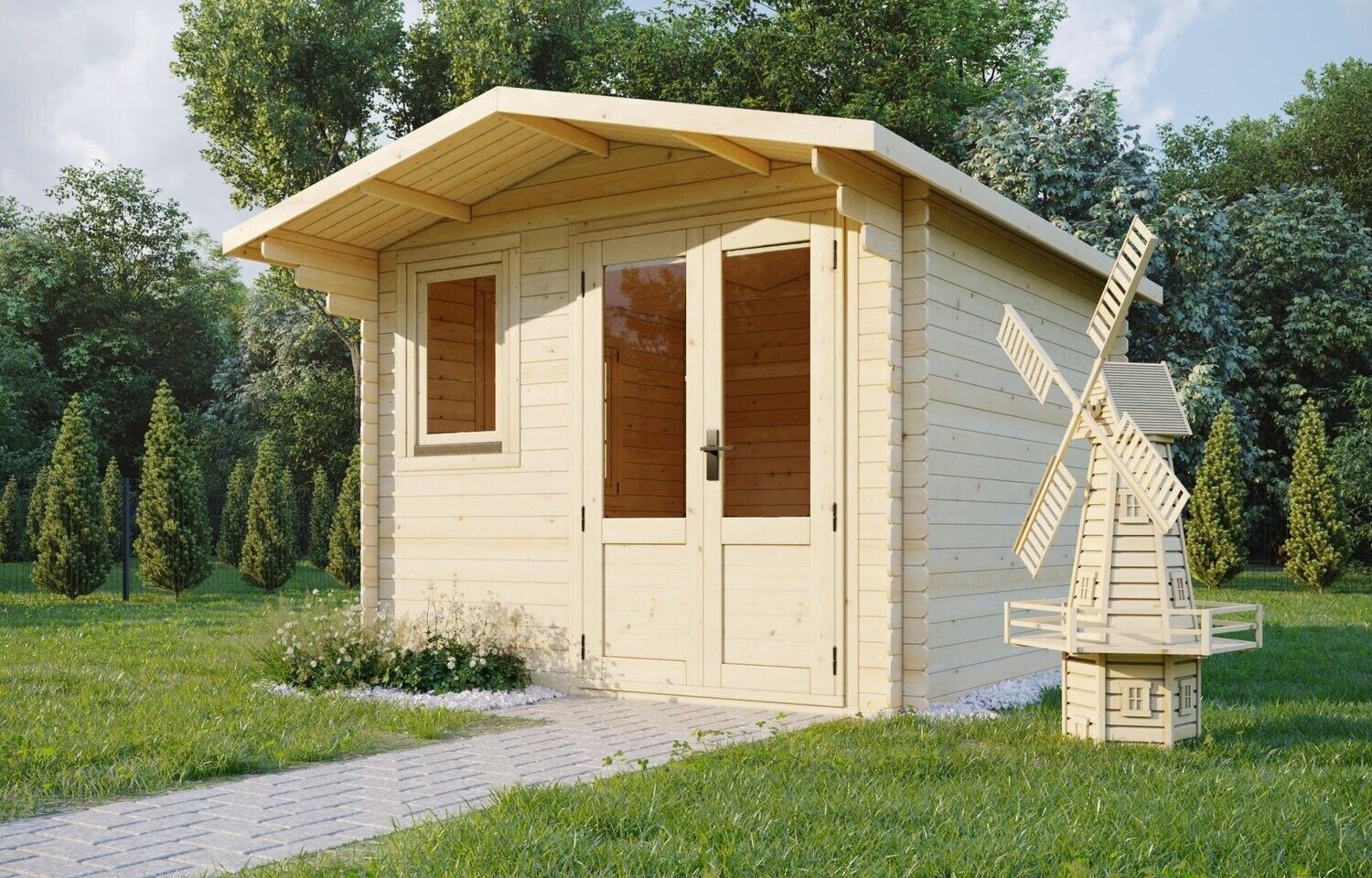
As you begin to envision your perfect summerhouse, you're likely imagining a serene escape that's tailored to your unique needs and style. But before you can unwind in your idyllic retreat, you'll need to carefully consider the fundamentals. You'll want to pinpoint the ideal location on your property, taking into account the path of the sun and the surrounding landscape. From there, you'll need to balance your design dreams with practical realities like budget and local regulations. As you weigh these factors, you'll start to uncover the possibilities - and the challenges - of creating your ultimate summerhouse haven.
Choosing the Perfect Location
When deciding where to place your summerhouse, think about the spot that receives the perfect balance of sunlight and shade, bearing in mind the direction your garden faces.
A garden summer house should be positioned to maximise its exposure to natural light, but also provide shade when needed. If your back garden receives direct sunlight for most of the day, consider placing your summerhouse near a tree or a shaded area to create a cosy atmosphere.
The size of your garden is also a vital factor to take into account.
A small garden space may require a compact summerhouse design, while a larger outdoor space offers more flexibility with regard to size and layout.
Think about the flow of your garden space and how the summerhouse will interact with the surrounding area. Will it be a focal point or a secluded retreat?
Assessing Your Site Conditions
Evaluating your site conditions involves examining the terrain, drainage, and existing features of your garden to determine how they'll impact your summerhouse design.
You'll need to think about the slope and elevation of your land, as well as any potential drainage issues that could affect your summer house.
Take note of any existing features, such as trees, gardens, or slopes, that could influence the placement and design of your summerhouse.
For instance, if you have a corner of your garden that's particularly shaded or receives heavy rainfall, you may want to contemplate a corner summerhouse design that takes these factors into account.
Additionally, you'll need to research and comply with local regulations regarding planning permission for your garden summer retreat.
Be certain to assess your site conditions carefully to guarantee a harmonious integration of your summerhouse with its surroundings.
Selecting the Ideal Shape
With your site conditions in mind, you can now turn your attention to selecting the ideal shape for your summerhouse that complements its surroundings and meets your needs.
The style and shape of your summerhouse will greatly impact its overall aesthetic and functionality.
When choosing the perfect shape, consider the following options:
Apex roof summerhouses: Ideal for sloping sites, these summerhouses feature a triangular roof that allows snow to slide off easily.
Pent roof summerhouses: With a single sloping roof, pent roof summerhouses are perfect for smaller sites and can be easily attached to your house or garden wall.
Corner summerhouses: These unique summerhouses are designed to fit snugly into a corner of your garden, maximising space and creating a cosy retreat.
Determining Your Budget
You'll need to set a realistic budget for your summerhouse project, considering factors like materials, labour, and any additional features you want to include.
This will help you prioritise your spending and make smart decisions throughout the process. For instance, if you're building a small summer house, you may be able to save on materials and labor costs. On the other hand, if you're opting for a classic summer house with intricate details, you'll need to factor in the added expense.
When setting your budget, think about the type of summerhouse you want. Wooden summer houses, for example, can be more expensive than other materials.
Consider the size, style, and features you need, and research the average costs associated with each. Don't forget to include contingencies for unexpected expenses that may arise during construction.
Exploring Material Options
Now that you've got a solid budget in place, it's time to think about the materials that'll bring your summerhouse to life. You'll want to choose materials that not only fit your budget but also complement your design style and provide the necessary durability.
When it comes to building a wooden summer house, timber is a popular choice. You can opt for pressure-treated timber to protect it from rot and insect damage. For the walls and floor, consider using tongue and groove boards, which provide a solid and sturdy structure.
Durability: Will the materials withstand the elements and last for years to come?
Aesthetics: Do the materials fit with your desired style and design?
Maintenance: How much upkeep will the materials require to keep them looking their best?
Insulation and Climate Control
Two essential elements to get right in your summerhouse design are insulation and climate control, which will regulate the internal temperature and create a comfortable living space.
You want to make certain that your summerhouse remains cool in the summer and warm in the winter. To achieve this, you'll need to insulate the building properly. Consider using materials with high insulation values, such as foam board or fiberglass, to line the walls and floor. Don't forget to double glaze your windows to prevent heat loss and keep the warm air in.
A well-insulated summerhouse will also help you maintain a cosy atmosphere, perfect for relaxing on chilly evenings. Climate control is also vital, especially in pent roof summerhouses where heat can quickly build up.
You can install vents, windows, or even a cooling system to regulate the temperature. By getting insulation and climate control right, you'll be able to enjoy your summerhouse all year round, regardless of the weather outside. With careful planning, you can create a comfortable and inviting space that's perfect for relaxation and entertainment.
Designing the Interior Space
Design the interior space of your summerhouse to reflect your personal style and meet your specific needs by selecting furniture, lighting, and decor that create a warm and welcoming atmosphere.
As you envision your perfect retreat, consider how you'll use the living space. Will it be a cosy reading nook, a home office, or an entertainment hub?
Choose multi-functional, customisable pieces that adapt to your needs, such as a sofa bed or a desk with storage.
Make the most of natural light by placing mirrors strategically and selecting light-coloured fabrics and finishes.
Consider the flow of your summer house and create distinct areas for different activities, ensuring a sense of harmony and balance.
Adding Lighting and Electricity
As you've carefully crafted the interior space to reflect your personal style, it's time to bring it to life with the right lighting and electrical elements that will enhance functionality and ambiance.
When it comes to lighting, think about a mix of overhead lighting, table lamps, and floor lamps to create a warm and inviting atmosphere in your summer house.
Don't forget to add some string lights or fairy lights to give your space a whimsical touch.
When it comes to electricity, you'll need to ponder how you'll power your summer house.
If you're opting for a log cabin summerhouse or a garden summerhouse, you may need to install electrical outlets and lighting.
Make sure to work with a licensed electrician to verify that everything is installed safely and correctly.
Look for suppliers that offer free delivery on electrical components to make the process easier and more cost-effective.
With the right lighting and electrical elements, you'll be able to enjoy your summer house to the fullest, whether you're reading a book, hosting a gathering, or simply relaxing in your own little retreat.
Incorporating Natural Elements
Bringing the outdoors in, you'll want to incorporate natural elements into your summerhouse design to create a seamless connection between your indoor and outdoor spaces. This will help you relax and unwind in your garden retreat, surrounded by the beauty of nature.
To achieve this, consider the following natural elements:
Wood accents: Wooden summerhouses are a great way to bring warmth and cosiness to your outdoor space. Exposed wooden beams, wooden floors, or wooden decorations can add a natural touch to your design.
Living walls: Incorporating plants into your summerhouse design can create a calming atmosphere and purify the air. You can opt for a living wall or add potted plants to bring in a touch of greenery.
Natural materials: Use natural materials like stone, brick, or bamboo to create a sense of harmony with the outdoors. These materials can add texture and visual interest to your summerhouse design.
Creating a Functional Layout
You'll want to configure your summerhouse's interior to accommodate your needs and activities, ensuring a functional layout that flows seamlessly.
Consider how you plan to use your summer house: will it be a cosy reading nook, an art studio, or a home office? This will help you determine the ideal layout for your space.
In a small summer house, every inch counts, so prioritise multi-functional furniture and clever storage solutions.
Traditional summer houses often feature an open-plan living area, perfect for entertaining or relaxing with family and friends.
Think about the flow of traffic and create distinct zones for different activities, such as a reading area, a dining space, or a games corner.
Don't forget to leave some breathing room – a cluttered summerhouse can quickly feel cramped and overwhelming.
Adding Personal Touches
Turn your summerhouse into a true reflection of your personality by incorporating personal touches that make the space feel truly yours. Whether you're designing a cosy log cabin summer house or a charming wooden summerhouse, it's the little details that'll make it feel like home.
To get started, consider the following personal touches:
Display personal treasures: Hang family photos, artwork, or sentimental objects on the walls to create a sense of warmth and character.
Add textiles with flair: Incorporate vibrant throw pillows, blankets, and rugs that reflect your personal style and add colour to the space.
Bring in nature: Incorporate elements from your garden, such as potted plants or a vase with fresh flowers, to connect your summer house to its surroundings.
Considering Sustainability
As you personalise your summerhouse, don't forget to balance your desire for a unique space with the need to minimise its environmental footprint.
Sustainability is key to creating a harmonious retreat that not only brings you joy but also takes care of the planet.
Start by choosing eco-friendly materials for your summer house, such as reclaimed wood or sustainably sourced timber.
Regular maintenance is also vital to guarantee your summerhouse remains sustainable.
Regularly inspect your wooden structures for signs of insect infestation and address any issues promptly.
Use wood paint that's free from harsh chemicals and toxins to protect both the environment and your health.
Additionally, consider incorporating energy-efficient features, such as solar panels or rainwater harvesting systems, to reduce your summerhouse's reliance on non-renewable energy sources.
Maximising Storage Space
Your summerhouse's compact footprint demands clever storage solutions to keep clutter at bay and maintain a serene atmosphere. Since you'll likely need to store garden tools, outdoor furniture, and other essentials, you must maximise your storage space.
To achieve this, consider the following strategies:
Opt for a summerhouse shed: A shed attached to your summerhouse can provide ample storage for garden tools, outdoor equipment, and other items you don't want cluttering your main living space.
Incorporate built-in storage: Design your summerhouse with built-in shelves, cabinets, and benches that offer hidden storage compartments. This will help keep your belongings organised and out of sight.
Utilise vertical space: Make the most of your summerhouse's ceiling height by installing hooks, baskets, or shelves that take advantage of the vertical space. This will help keep your floors and surfaces clear and clutter-free.
Adding Outdoor Features
Now that you've optimised your summerhouse's interior storage, it's time to focus on extending its functionality outdoors by incorporating features that blur the lines between indoor and outdoor living.
You want your outdoor space to be an extension of your summer house, not just an afterthought. Consider adding a pent roof to create a seamless passage between indoors and outdoors. This will provide shade and protection from the elements while still allowing you to soak up the sunshine.
Next, think about incorporating a hot tub or outdoor shower to create a spa-like experience in the comfort of your own garden. This won't only add a touch of luxury but also create a sense of relaxation and tranquility.
You can also consider adding garden rooms or outdoor seating areas to create separate spaces for lounging, dining, or entertaining. By thoughtfully designing your outdoor space, you can create a cohesive and inviting area that complements your summer house perfectly.
Balancing Form and Function
You'll want to strike a balance between aesthetics and practicality when designing your summerhouse, ensuring that its visual appeal doesn't compromise its functionality. A beautiful summer house that's not functional won't be used, and a functional one that's not visually appealing won't be enjoyed.
To achieve this balance, consider the following:
Functionality: Think about how you'll use your summerhouse. Will it be a home office, a reading nook, or an entertainment space? This will help you determine the layout, storage, and features you need.
Space planning: Consider the size and shape of your summerhouse. An apex summerhouse or pent summerhouse can provide more overhead storage, while a corner summer house can make the most of a tight space.
Practical features: Don't forget to include practical features like lighting, heating, and power outlets. A well-designed summerhouse should be both beautiful and functional, making it the perfect retreat for you.
Conclusion
You've created the ultimate summerhouse, a haven that's the envy of the neighbourhood!
Your perfect retreat is a symphony of style, functionality, and sustainability, where every detail has been meticulously considered to create a space that's simply divine.
With its ideal location, stunning design, and clever storage solutions, your summerhouse is the epitome of relaxation, a place where you'll spend lazy summer days lounging in blissful tranquility.
It's a slice of heaven on earth, and it's all yours!
Comment On This Log Cabin Store Post
Share This Post
Get your dream log cabin
Fill in the form below and we'll be in touch.
Contact Us
More From the Log Cabin Store

